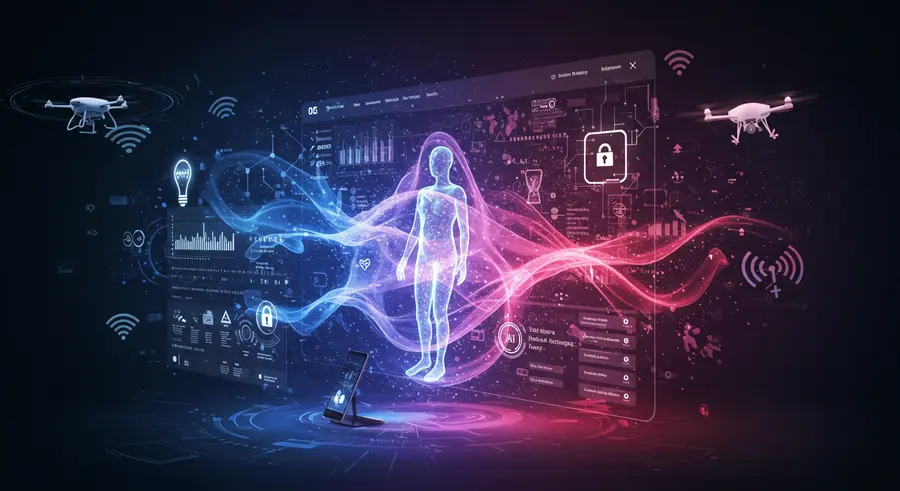Appearance

Welcome, innovators and web enthusiasts! 👋 Today, we're diving deep into an exciting frontier where Progressive Web Apps (PWAs), Artificial Intelligence (AI), and Advanced Hardware Access converge. This powerful synergy is reshaping the landscape of web development, blurring the lines between web and native applications, and opening up unprecedented possibilities for rich, intelligent, and deeply integrated user experiences.
🚀 The Evolution of PWAs: Beyond Basic Web Apps
For years, PWAs have been celebrated for their ability to deliver app-like experiences directly through the browser. They offer offline capabilities, push notifications, and faster loading times, making them a cornerstone of modern web development. But the journey doesn't stop there. With the continuous evolution of Web APIs, PWAs are gaining increasingly sophisticated access to device hardware, bringing them closer than ever to the capabilities traditionally reserved for native applications.
Think about it:
- Geolocation & Sensors: PWAs can already tap into location services, accelerometers, gyroscopes, and more, enabling context-aware and interactive applications.
- Camera & Microphone: Access to media input devices allows for powerful communication tools, image processing, and augmented reality (AR) experiences directly in the browser.
- File System Access: Emerging APIs are empowering PWAs with more robust file system interactions, leading to richer content creation and management tools.
🧠 The AI Infusion: Making PWAs Smarter
The integration of AI into PWAs is a game-changer. AI can transform static web experiences into dynamic, personalized, and predictive interactions. Here’s how:
- Personalized Experiences: AI algorithms can analyze user behavior and preferences to deliver highly tailored content, recommendations, and interfaces. Imagine an e-commerce PWA that intelligently curates product suggestions based on your browsing history and even your current mood, inferred from subtle interactions.
- Enhanced Search & Discovery: AI-powered search can go beyond keywords, understanding context and intent to provide more relevant results. Voice search optimization, a rapidly growing trend, is a prime example of AI enhancing accessibility and convenience.
- Optimized Performance with Edge AI: Running AI models directly on the device (edge AI) via advanced hardware access can significantly reduce latency and improve privacy. This means faster responses for tasks like image recognition or natural language processing, as data doesn't need to travel to a distant server.
- Intelligent Automation: AI can automate repetitive tasks, provide real-time assistance, and even predict user needs, making PWA interactions seamless and intuitive. Think of an AI-powered customer service chatbot embedded directly into a PWA, capable of resolving complex queries without human intervention.
🔌 Hardware Access: Unlocking New Dimensions
The true power emerges when AI and enhanced hardware access work in tandem. This synergy enables PWAs to deliver experiences that were once unimaginable for web applications.
- Bluetooth & NFC: Imagine a PWA for smart home devices that connects directly via Bluetooth, or a contactless payment PWA leveraging NFC for secure transactions.
- WebUSB & WebSerial: These APIs allow PWAs to communicate directly with USB and serial devices, opening doors for controlling external hardware, data logging, and even flashing firmware – all from a web browser.
- Advanced Camera Controls: Beyond basic photo capture, new APIs are providing granular control over camera settings, enabling sophisticated computer vision applications directly within the PWA for things like object recognition, augmented reality overlays, and real-time video analysis.
- Sensors and Haptics: Combining AI with advanced sensor data (like motion sensors for fitness apps or environmental sensors for smart agriculture) and haptic feedback can create highly immersive and responsive user interfaces.
💡 Use Cases and Real-World Impact
The possibilities are endless:
- Healthcare: PWAs that leverage device sensors to monitor vital signs and AI to analyze data for early detection of health issues.
- Manufacturing: PWAs for monitoring industrial machinery, using AI for predictive maintenance and integrating with specialized hardware for real-time control.
- Education: Interactive learning PWAs that adapt to student progress using AI and utilize device hardware for immersive simulations and experiments.
- Retail: PWAs with AI-powered visual search, allowing users to snap a photo of an item and instantly find it online, or interactive AR experiences for trying on clothes virtually.
🔗 Explore More
This article builds upon the foundation of Progressive Web Apps. For a deeper dive into core PWA features, refer to our existing catalogue entry: Core PWA Features: Service Workers and Manifest.
🌐 The Future is Intelligent and Integrated
The convergence of PWAs, AI, and advanced hardware access is not just a trend; it's a fundamental shift in how we conceive and build web applications. As browser capabilities continue to expand and AI models become more accessible, PWAs will increasingly become the go-to solution for delivering rich, intelligent, and deeply integrated user experiences across all devices.
Get ready to build the future of the web – it's intelligent, it's connected, and it's powered by PWAs! ✨